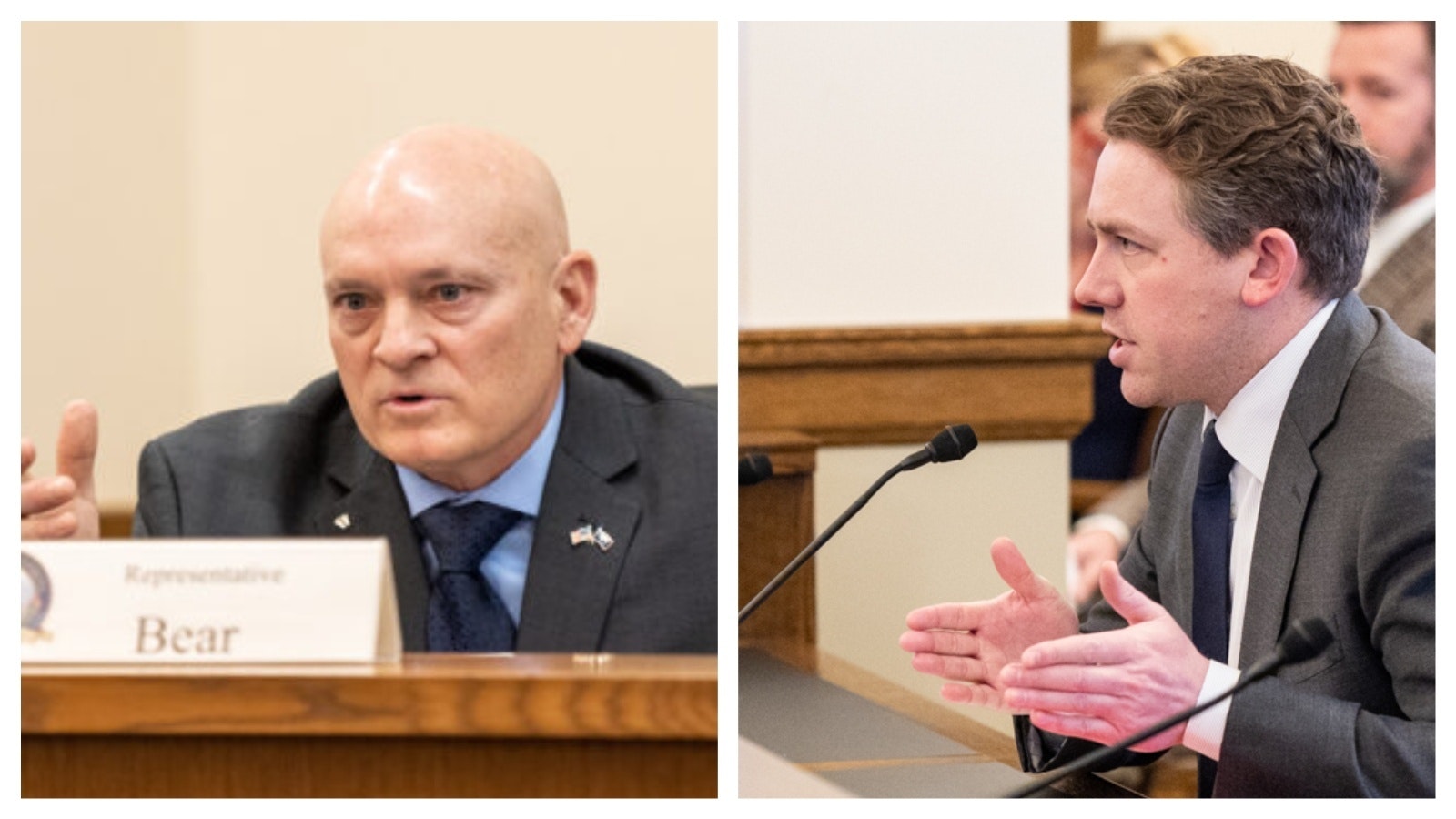NEWCASTLE — Concerns about a proposal to sell federally-owned land in Wyoming and other Western states are overblown, U.S. Rep. Harriet Hageman said Friday morning.
Rancher and real estate agent Julie Pederson asked Hageman about the proposed sale of land owned by the Bureau of Land Management and Forest Service during a town hall held at Newcastle High School. She was among a crowd of about 50 people, mostly Hageman supporters.
Senate Energy and Natural Resources Chairman Mike Lee, R-Utah, proposed including language in the One Big Beautiful Bill Act championed by President Donald Trump directing the two federal agencies to dispose of 0.75% and 0.5% of the land they own across 11 Western states.
The 11 states are Wyoming, Alaska, Arizona, California, Colorado, Idaho, Nevada, New Mexico, Oregon, Utah and Washington.
“That’s where the majority of federal lands are,” Hageman said.
The federal government owns at least 28.6% of the land in each of the 11 states.
Why Not Montana?
One state with a higher percentage of federal land — Montana at 29% — is not included in the list of states.
A follow-up question asked why Montana was excluded from the language.
Hageman said she wasn’t sure why the state was excluded.
“This is a Senate bill,” Hageman continued. “I didn’t write it.”
Hageman was one of 215 House members to vote to approve the bill when it passed the House on May 22. Lee’s language was added after the bill moved to the Senate and, if the language is approved by the Senate, would also have to be approved by the House.
There are also 10 or 11 types of land within the 11 states that are excluded from a potential sale, Hageman said. The exclusions include national monuments, national recreation areas, wilderness areas, national parks, national trails and national wildlife refuges.
“My interpretation standing from talking with Senator Lee is it will also exclude all of those lands that are currently under lease,” Hageman said. “So, if you have a grazing lease or where we have a ski area that has a 99-year lease with the Forest Service, those lands would not be subject to this particular bill.”
There are also parcel size limitations, she added.
Misinformation
There’s a lot of misinformation out there about Lee’s proposal, Hageman said.
The Wilderness Society recently published a map showing all of the land BLM and the Forest Service own across the 11 states as potentially available for sale if the bill passes. All of Bridger-Teton National Forest is shown as potentially disposable in the map.
“That’s silly,” Hageman said. “That’s so far beyond what we’re talking about doing.”
The map also “demonstrates the level of disingenuousness” of the people opposing Lee’s proposal because it also includes land within the BLM’s Buffalo and Rock Springs Resource Management Plans, she added.
Hageman provided four examples of land that could be sold under Lee’s proposal.
Kemmerer, a city in southwestern Wyoming, is landlocked by BLM land, she said.
New workers are arriving to build a new nuclear reactor and there’s no affordable housing for them, Hageman said. Lee’s proposal allows the city, county and state to work with the BLM to identify tracts of land near the city that could be sold and developed into affordable housing.
Another example are sections of Las Vegas that are owned by the BLM and can’t be developed or effectively managed by the BLM, she said.
Around 80% of Nevada and 63% of Utah are owned by the federal government, and the growing metropolitan areas of Las Vegas, Reno and Salt Lake City can’t expand and add manufacturing sites without more land, she added.
The land that could be sold is isolated, near urban areas and doesn’t make sense for the federal government to manage, Hageman said.
Lee’s proposal also lets the states and local governments direct the process, Hageman continued. The state and local governments can suggest parcels they would like the federal government to convey to them, Hageman said.
Lee’s proposal is subject to a Byrd Rule challenge.
The Byrd Rule is named after U.S. Sen. Robert C. Byrd, D-West Virginia. It mandates no extraneous matters from being included in the reconciliation process that Republicans are using to move the One Big Beautiful Bill through Congress.
If his proposal makes it through the challenge, it could be considered by the Senate next week and back to the House after that.
Matthew Christian can be reached at matthew@cowboystatedaily.com.





